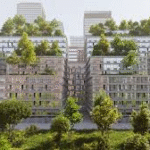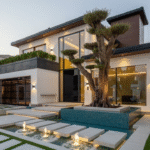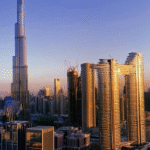Now Reading: Burj Khalifa Secrets: How Emaar Built the Tallest Wonder Now 2025
-
01
Burj Khalifa Secrets: How Emaar Built the Tallest Wonder Now 2025
Burj Khalifa Secrets: How Emaar Built the Tallest Wonder Now 2025

The Burj Khalifa, the tallest building in the world, stands proudly in the heart of Downtown Dubai, attracting millions of visitors each year. While many admire its height and sparkle, few know the story behind its iconic design. Developed by Emaar Properties, the Burj Khalifa is not just a building—it’s a symbol of innovation, ambition, and design mastery.
In this article, we explore the ideas, inspiration, and engineering genius that gave birth to this architectural marvel.
The Vision: More Than Just Height
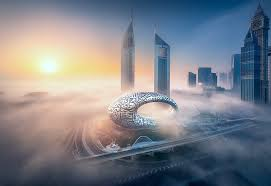
When Emaar announced plans to construct the tallest structure on Earth, the world watched with excitement and skepticism. But Emaar’s vision was clear: to build a skyscraper that would put Dubai on the global map of modern architecture and tourism.
From the beginning, Burj Khalifa was designed to be more than a tall tower. It was meant to be a mixed-use masterpiece that included residences, offices, a hotel, and public spaces—all integrated into a graceful form inspired by traditional Islamic architecture and nature itself.
Design Inspiration: A Flower, A Culture, A Dream

The design of the Burj Khalifa was heavily influenced by the Hymenocallis, a desert flower known for its long petals that extend symmetrically from its center. This flower inspired the Y-shaped floor plan, which is both aesthetic and functional.
Adrian Smith, the chief architect from the global firm Skidmore, Owings & Merrill (SOM), led the design team. He aimed to blend modern engineering with cultural elegance. The tower’s vertical form, with setbacks that spiral upward, reflects patterns found in Islamic architecture, giving the skyscraper a spiritual and cultural relevance that resonates with the Middle East.
The Architecture: Form Meets Function
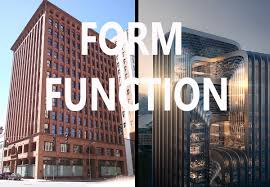
Standing at 828 meters (2,716.5 feet), the Burj Khalifa has 163 floors and includes:
- Residences on the upper levels
- Corporate suites
- The Armani Hotel, a luxury collaboration with fashion icon Giorgio Armani
- Observation decks like At The Top and At The Top SKY
- Restaurants and lounges, offering panoramic views of Dubai
The tripod-shaped base provides structural stability and minimizes wind forces, which is crucial for tall buildings. The setbacks allow the tower to reduce wind load while also creating outdoor terraces and providing a unique, twisting visual effect as it rises.
Each wing of the Y-shaped plan tapers as it ascends, forming a stepped spiral pattern. This smart design also creates more window space, giving residents and guests 360-degree views of the city, desert, and sea.
The Engineering: Built to Defy Limits
Designing a building of this height came with enormous engineering challenges. To make it possible, Emaar teamed up with top international engineers, including structural engineers from SOM and Hyder Consulting, among others.
Some of the key engineering highlights include:
- High-performance concrete, designed to withstand Dubai’s extreme heat and humidity
- A deep foundation system, with over 192 bored piles driven into the ground to secure the base
- A tuned mass damping system to help manage the building’s sway due to wind and seismic activity
The team also installed a special cladding system made of aluminum and textured stainless steel, which helps reduce heat absorption and gives the building its shimmering finish.
Smart Systems and Sustainability
Despite its massive size, the Burj Khalifa is designed with sustainability in mind. Its features include:
- Condensate water collection systems that capture water from the air-conditioning system, which is then reused for irrigation
- Smart lighting and building controls that reduce energy usage
- Glass cladding that reduces solar heat gain, helping to keep the interiors cool
Emaar made it clear from the start: the Burj Khalifa had to be a leader in both luxury and efficiency.
Interiors and Artistic Elements
The Burj Khalifa’s interiors are just as stunning as its exterior. Designed by Skidmore, Owings & Merrill in collaboration with celebrity designer Giorgio Armani, the inside features a blend of polished stone, stainless steel, Venetian stucco, and custom-designed carpets.
The building is also home to over 1,000 specially commissioned artworks from Middle Eastern and international artists. These were carefully selected to reflect both local culture and global innovation.
More Than a Landmark: A Global Icon
Since opening in 2010, the Burj Khalifa has:
- Hosted millions of visitors each year
- Served as a stage for New Year’s Eve fireworks shows watched by the world
- Been featured in movies like Mission: Impossible – Ghost Protocol
- Become a symbol of Dubai’s rise as a global city
Behind this success is Emaar Properties, whose bold vision and commitment to excellence turned a dream into reality. Their work on the Burj Khalifa set a new benchmark for urban development—not just in the UAE, but around the world.
Final Thoughts: A Triumph of Design and Ambition.
The Burj Khalifa is not just the tallest building in the world. It is a story of vision, culture, design, and determination. Emaar Properties didn’t just build upwards—they reached forward into the future, using smart design and international collaboration to create an icon that will inspire generations.
For architects, engineers, and dreamers everywhere, the Burj Khalifa is proof that no height is too great when passion and planning come together.
Read More:- Shobha Realty Launches Its Most Luxurious Project Yet—Full Details Inside 2025











